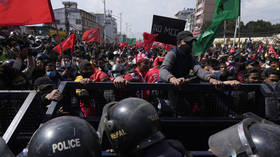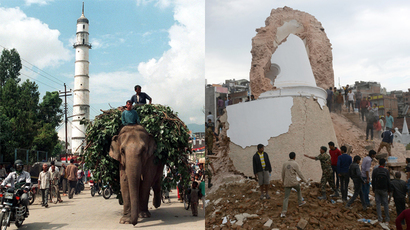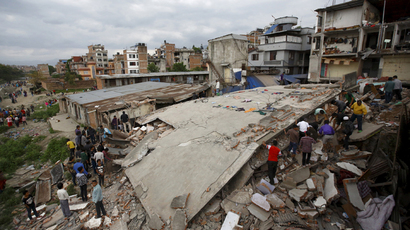The unlikely nation now at the centre of US-China tensions

Largely unseen by the Western world, the Himalayan nation of Nepal has been rocked by protests over the past few weeks, amid mounting opposition to a controversial aid package signed with the United States in 2017.
In a deal arranged under the US government aid agency, the Millennium Challenge Corporation (MCC), more than $700 million was pledged to the landlocked country in terms of assistance and infrastructure investment in exchange for what is described as “a commitment to good governance, economic freedom, and citizen investment” – as well as an endorsement of the US’ anti-China ‘Indo-Pacific Strategy’.
Nepal, which desperately needs economic growth and infrastructure investment, is yet to ratify the agreement in parliament owing to a split in its ruling coalition, with its two communist parties – one of which is Maoist – seeing the deal as an unacceptable infringement on its national sovereignty. The Biden administration has set a deadline of February 28 for it to be ratified. As well as the protests in Nepal, the deal has also prompted opposition from China, which has accused the US of “coercive diplomacy.”
While the peaks of the Himalayas are freezing, Nepal now finds itself at the ever warming epicentre of global tensions and in a geopolitical tug of war. That can generally be attributed to its location, because it sits right in between India and China, raising questions of whose sphere of influence it ought to be in.
Once a tributary state of the Qing Dynasty, it was brought forcefully into the orbit of the British Empire as a protectorate and in later gaining independence, formed a natural affiliation with India, with which it shares the common religious heritage of Hinduism. But the Nepali-Indian relationship hasn’t always been straightforward and has occasionally been one of contention. In seeking to find political space for itself, Kathmandu has also sought to build a relationship with its other large neighbour, China. Nepal, after all is one of the few countries in the world where Maoist ideology continues to be a force in mainstream politics.
In recent years geopolitical tensions have increased, with the US seeking to contain Beijing, and China and India competing against each other. This deteriorating picture has led to a battle over Nepal’s future. As China’s economy has outgrown India’s, its economic importance to Nepal’s own development has grown considerably, with a Belt and Road Initiative project to construct a cargo railway between Tibet and Kathmandu underway.
Since 2015, Beijing has overtaken India as the highest source of foreign investment in the country. According to data from Bridge Consulting, China has sold and donated up to 23 million vaccines to Nepal – enough to cover half of its population – weakening India’s position as Kathmandu’s traditional source of vaccines. Nepal also voiced its support for China’s national security law.
Given all this, it’s no surprise that the US has sought to seemingly exert its influence in Nepal too. Although the Indo-Pacific Strategy is at heart maritime-based and Nepal is landlocked, its position is important, especially if America can force through a route to military cooperation against China, and project influence into Tibet.
As a result, as one of the Trump administration’s opening gambits on the region, the US proposed the MCC aid-led investment of $700 million. The deal had obvious appeal – with a GDP per capita of just $1,115, Nepal is very poor, and had also suffered a humanitarian disaster in 2015 in the form of a crippling earthquake.
As a result, it was unreasonable to expect the government to reject such a proposal. But the fact it comes with the ‘catch’ of endorsing America’s Indo-Pacific Strategy is clearly problematic, as this would tilt the country against one of its most important partners: China. This has led to widespread opposition towards the package.
As Nepalis have been protesting against US influence, the demonstrations have largely been ignored by the Western mainstream media – a contrast to what we could expect had they been railing against Beijing. Yet all the evidence points towards a deliberate American attempt to try to upset China’s relationship with the country. A further example was the fact the BBC also carried a story on what it said were “leaked documents” stating that China had “encroached” Nepal’s border – a claim the Chinese embassy in Kathmandu denies.
What is happening is clear. Although the primary focuses of US-China tensions to date have been Taiwan, the South China Sea and Xinjiang, one must not overlook Nepal. There is a geopolitical struggle brewing over the nation, which ideally wants to stay independent, neutral and non-aligned. Whether that is possible remains to be seen, as the government now faces some difficult decisions, with the associated powers starting to demand that it takes sides.
The statements, views and opinions expressed in this column are solely those of the author and do not necessarily represent those of RT.















